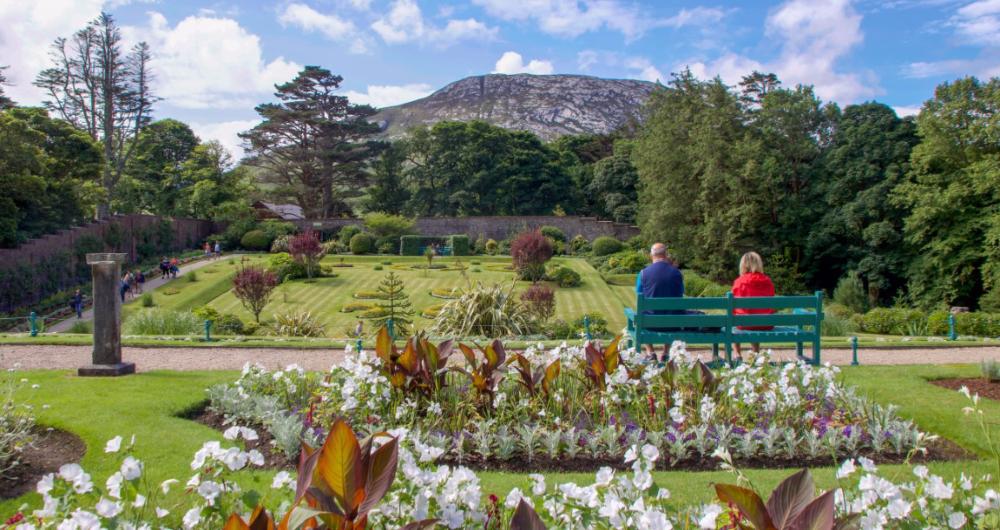In This Article
Want to see the heart and soul of Ireland beyond the cities? These small towns and scenic spots make for unforgettable day trips filled with coastal beauty, local flavor, and a touch of magic.
If you are in a hurry, I recommend:
- Wander the colorful streets of Dingle and spot dolphins from the harbor.
- Explore Kilkenny’s medieval castle, cobblestone lanes, and craft shops.
- Visit the dramatic Cliffs of Moher with a stop in nearby Doolin for traditional music.
- Stroll Westport’s charming town center and bike along the Great Western Greenway.
- Relax in the peaceful lakeside town of Killarney with access to the Ring of Kerry.
Unique Day Trips in Ireland:
1. The Boyne Valley
"Explore ancient tombs or walk along historic battlefields in this scenic region." - VI
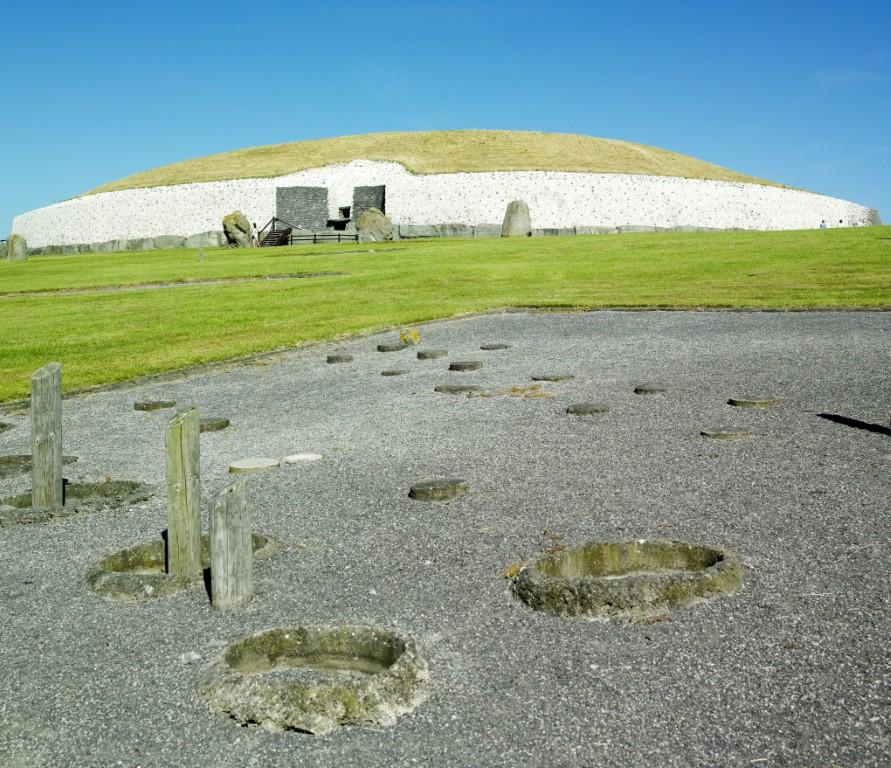
© Richard Semik/stock.adobe.com
The Boyne Valley is Ireland's former ancient capital, located in the country's eastern region. The region is home to some of Ireland's most historic landmarks, including the great prehistoric tombs of the UNESCO World Heritage Site Brú na Bóinne, or Newgrange. More than five millennia of human history can be traced as part of scenic drives throughout the valley to sites such as the historic Drogheda region, the Loughcrew Megalithic Centre, and the site of the 1690 Battle of the Boyne, between the forces of King William and the deposed King James II.
Many scenes from the feature film Braveheart were filmed at Trim Castle, Europe's largest Anglo-Norman castle, dating back to the 12th century. Other attractions throughout The Boyne Valley include the Slane Castle and Distillery, which offers whiskey tastings and live concert performances, and the legendary ancient Celtic crosses at the former Kells monastery.
2. Belfast
"Visit the Titanic Museum or explore the city’s vibrant street art scene." - VI

© Guilherme/stock.adobe.com
Belfast is the charming capital city of Northern Ireland, known as one of the United Kingdom's most-visited tourist destinations, attracting over seven million annual visitors. The city was noted Lonely Planet's top recommended travel destination in 2018, best known as the birthplace of the fabled cruise liner RMS Titanic, known for its dramatic sinking in 1912.
Visitors can explore the city's Titanic Quarter dockyards, which is home to the Titanic Belfast monument, the Titanic Slipways concert venue, and the preserved drawing offices of shipbuilders Harland and Wolff. More than 40 public park spaces are showcased throughout Belfast, including the lovely Victorian Botanic Gardens, located within the Queen's Quarter. Its longstanding underground nightclub scene has attracted major international acts since the early 1980s.
3. Blarney Castle
I like:
"Kiss the famous Blarney Stone or stroll through lush castle gardens." - VI
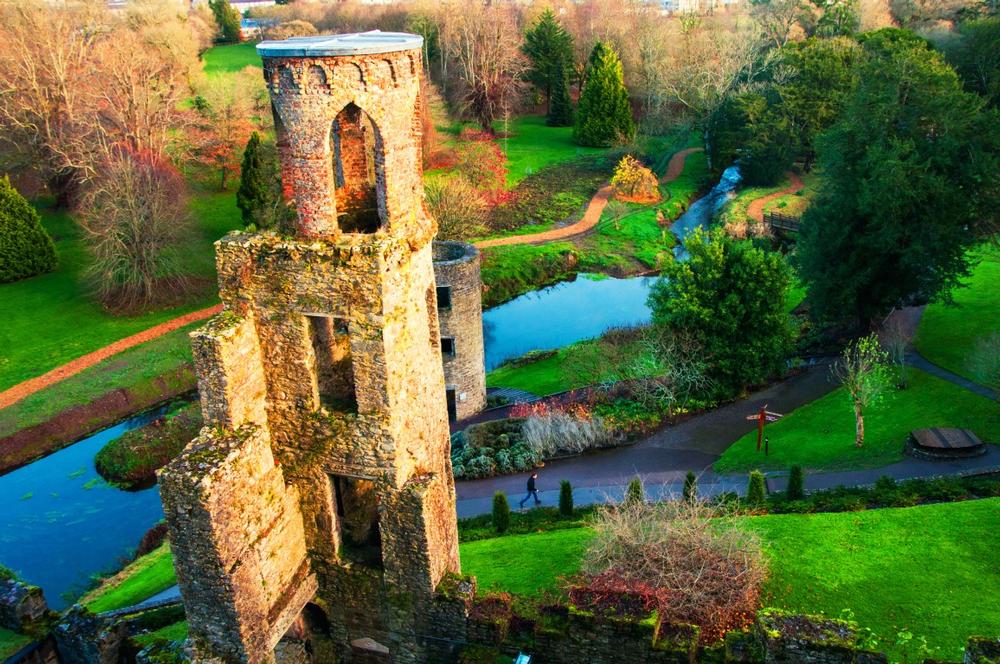
© Madrugada Verde/stock.adobe.com
Blarney Castle
is a lovely historic Medieval-era stronghold in Blarney, located near the city of Cork and the River Martin. The historic fortifications, which date back as far as 1446, are best known as the home of the famed Blarney Stone, which is said to endow those who kiss it with the gift of eloquence and flattery. Because of this legend, the world "blarney" itself has become synonymous with wit, flattery, and charm. Visitors can also tour areas of the historic castle, which was constructed in its present form by Cormac Laidir MacCarthy, Lord of Muscry. The castle's beautiful surrounding grounds are home to extensive landscaped garden and a number of natural rock formations, including the Witch's Cave, Wishing Steps, and Druid's Circle.
Blarney Castle, Monacnapa, Blarney, Co. Cork, Ireland
4. The Cliffs of Moher
"Admire breathtaking ocean views or walk along dramatic coastal cliffs." - VI
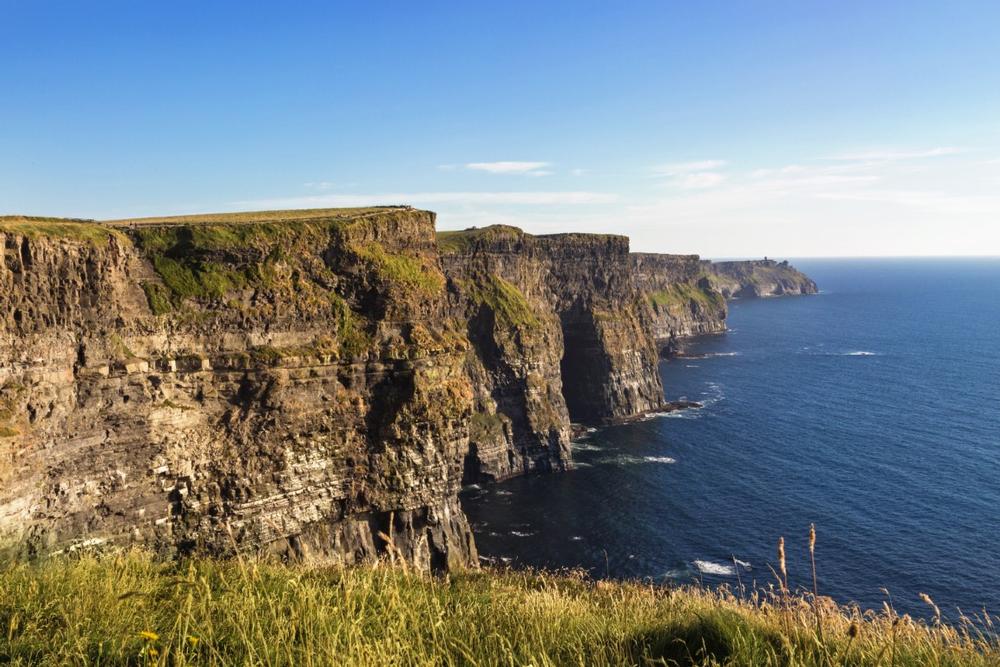
© Elena Schweitzer/stock.adobe.com
The Cliffs of Moher
a stretch of gorgeous sea cliffs located along County Clare's Burren region, protected within the UNESCO World Heritage Site Burren and Cliffs of Moher Geopark tourism destination. The cliffs, which are known as a signature point along the official Wild Atlantic Way tourism trail, are one of Ireland's most popular tourist destinations, drawing over 1.5 million visitors each year.
Visitors can explore The Cliffs of Moher via a lovely 18-kilometer Cliff Walk, which spans between Doolin and Hag's Head and passes past sites such as O'Brien's Tower. A lovely visitor center offers exhibits on the region's ecosystems and uses environmentally-sensitive technology to protect the region's fragile habitat. Ferry trips are also available at certain times throughout the year to view the cliffs from the sea.
5. Connemara
"Discover rugged mountain landscapes or explore charming seaside villages." - VI
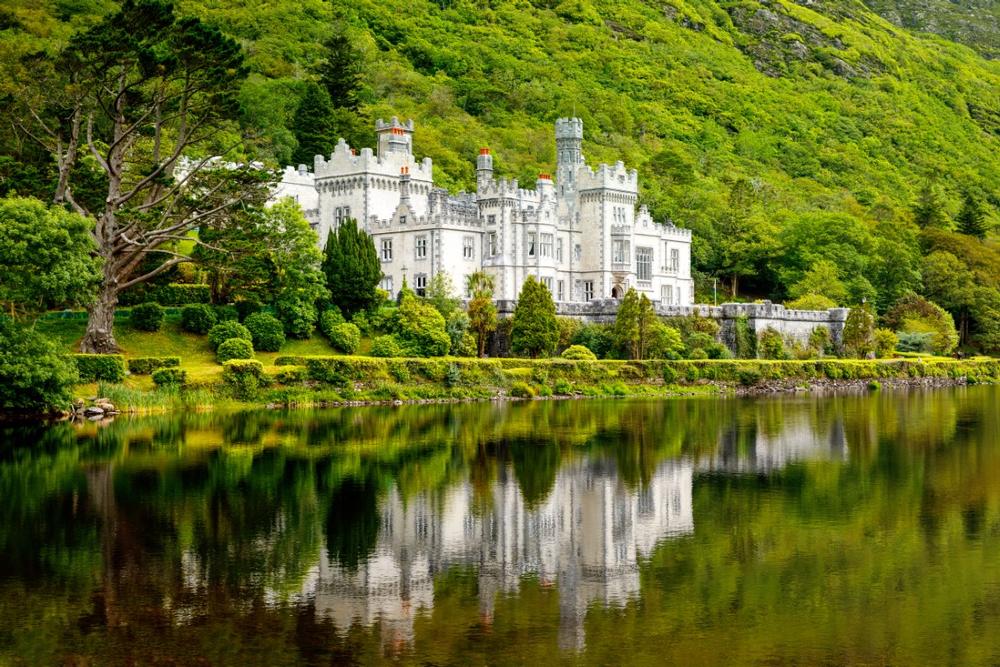
© Irina Schmidt/stock.adobe.com
Connemara is a lovely district in western Ireland, located along the country's Atlantic Ocean coastline. The charming district showcases rural Ireland at its best, home to beautiful attractions like the expansive Connemara National Park, known for its mountain ranges, bogs, lakes, and heathland stretches and populations of wild Connemara ponies. Visitors can explore the region's Diamond Hill Loop Walk, which showcases the famed peaks of the Twelve Ben Mountains, or explore the quaint coves, bays, and fishing villages at sites such as Roundstone. Kylemore Abbey stands on the shores of Lough Pollacopall, built in 1871 by Mitchell Henry as a romantic monument to his wife, Margaret. In the lively town of Clifden, visitors can enjoy traditional Irish music at a number of concert venues and pubs.
Romantic Day Trips in Ireland:
6. Cork
"Walk along historic streets or visit bustling food markets for local flavors." - VI

© Madrugada Verde/stock.adobe.com
Cork is Ireland's second-largest city, named as the European Capital of Culture in 2005 and included as one of the world's best travel spots by Lonely Planet in 2010. The city, which is located within the southwestern province of Munster, is known for its famed architecture dating back to the Medieval period, including its historic Red Abbey, St. Fin Barre's Cathedral, and Church Tower of Shandon, known as the city's official landmark and topped by a weathervane featuring an 11-foot salmon. Visitors can explore the beautiful grounds of the University College Cork, attend performances at the Cork Opera House, or shop at the English Market, which dates back to 1786. Major literary community centers include the Munster Literature Centre and Triskel Arts Centre, historically connected to authors like Thomas McCarthy and Seán Ó Faoláin. Visitors can also enjoy delicious local food traditions and sample dishes like drisheen, crubeens, and tripe.
7. Galway
"Experience lively Irish music or stroll along the colorful Latin Quarter." - VI
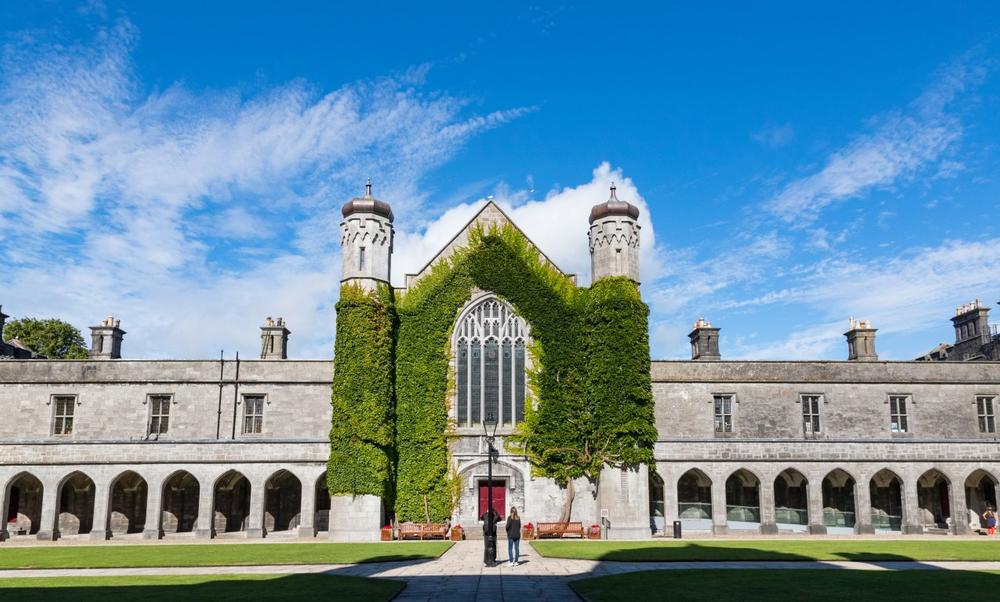
© gabe9000c/stock.adobe.com
Galway is a lovely city on Ireland's western coastline, located at the terminus of the River Corrib at the Atlantic Ocean coastline. The hip, bohemian city is known as one of the nation's top cultural destinations, populated by vibrant pubs, charming streetside cafes, and gourmet restaurants. Visitors can explore the city's historic Claddagh neighborhood, once home to a significant Irish-speaking enclave community and associated with the famed Claddagh ring symbol. Cultural museums in Galway include the Galway City Museum, the Nora Barnacle House Museum, and several museums at the city's university, including the James Mitchell Geology Museum. At 18th-century Eyre Square, visitors can relax and listen to traditional Irish folk music. Boutiques, art galleries, and cafes line the city's delightful Latin Quarter, which still showcases Medieval-era fortification walls.
8. Giants Causeway
"See unique basalt columns or explore legendary Irish folklore." - VI
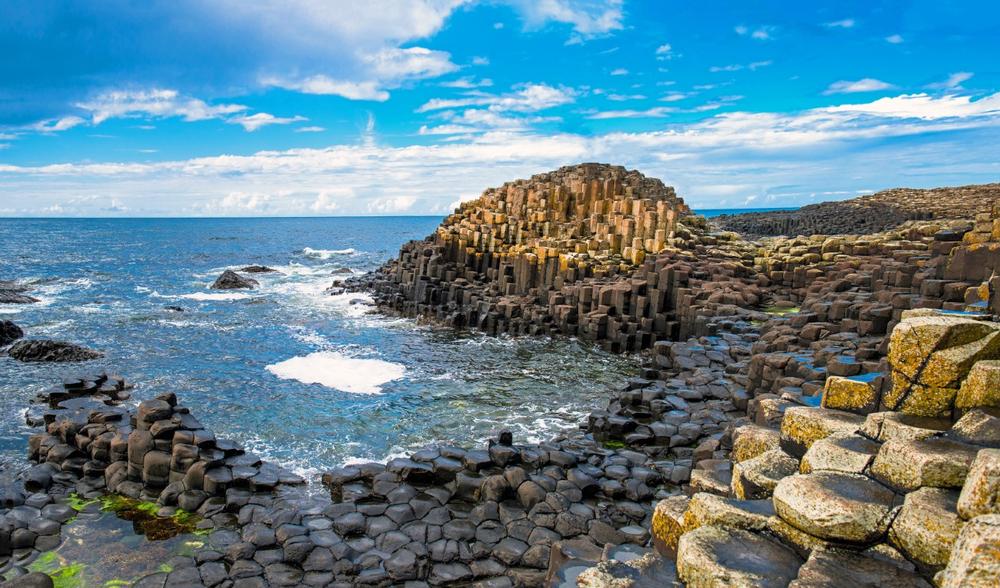
© Lyd Photography/stock.adobe.com
Giants Causeway is a unique geological feature in County Antrim on Ireland's northern coastline, located approximately three miles northeast of the city of Bushmills. The UNESCO World Heritage Site protects a region of approximately 40,000 interlocking basalt columns produced as the result of an ancient volcanic fissure eruption. Today, it is widely considered to be one of the United Kingdom's most beloved natural wonders, known as one of Northern Ireland's most popular natural tourist attractions. The Giants Causeway earns its name from a legend that the columns were created as a causeway for the Irish giant Finn MacCool. Visitors can explore the site free of charge throughout the year and view exhibits on the region's geology at its new visitor center, opened in 2012.
44 Causeway Rd, Bushmills BT57 8SU, UK, Phone: +44-28-20-73-18-55
Family Day Trips in Ireland:
9. Glenveagh National Park
"Walk along scenic trails or visit a historic lakeside castle." - VI
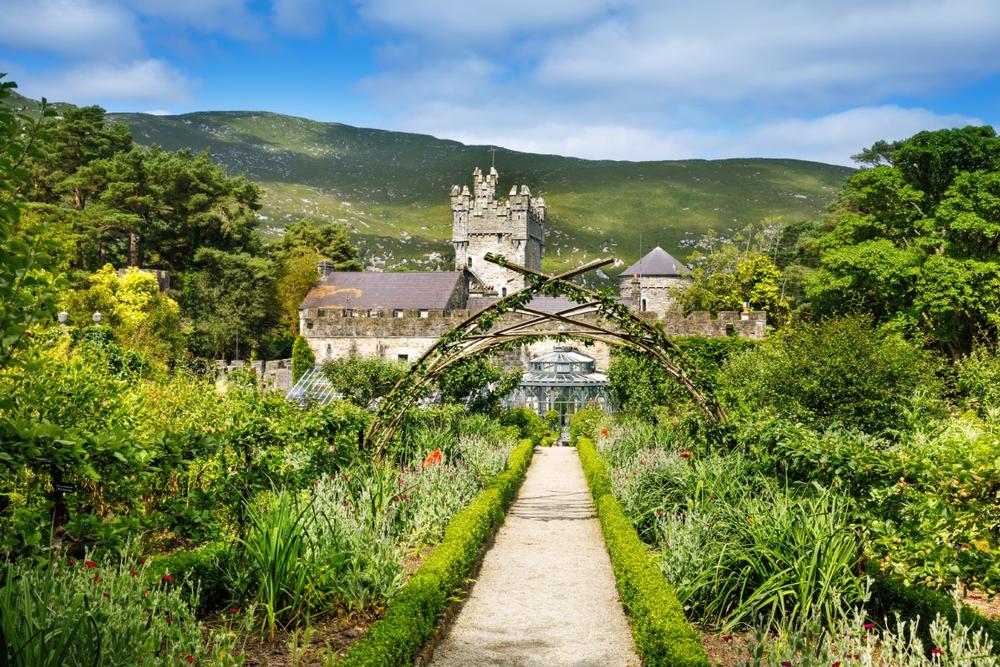
© Irina Schmidt/stock.adobe.com
Glenveagh National Park is Ireland's second-largest national park, named in honor of the Irish term "gleann bheatha," which translates as "glen of the birches." Glenveagh National Park
encompasses much of the beautiful Derryveagh Mountains, Errigal Mountains, and the Poisoned Glen, known for its beautiful walking trails and extensive herds of red deer. The beautiful Glenveagh Gardens are home to a picturesque castle constructed by Captain John George Adair and designed by John Townsend Trench. Visitors can explore the castle as part of guided tours, which last approximately 45 minutes. A half-hour documentary presentation, "Glenveagh," documents the castle's history, available in several languages.
Church Hill, Letterkenny, Co. Donegal, Ireland, Phone: +35-37-61-00-25-37
10. The Great Western Greenway
"Bike on a scenic coastal path or admire stunning countryside views." - VI

© lisandrotrarbach/stock.adobe.com
The Great Western Greenway is a charming greenway rail trail in County Mayo, extending 42 kilometers between Westport and Achill. The trail closely follows the route of the former Westport railway line's Achill extension, originally operated between the 1890s and the 1930s. Today, the route is open to cyclists and walkers, extending through towns such as Newport and Mulranny and natural wonders like the coastline of Clew Bay. Travelers can explore beautiful Westport attractions like Westport House, Westport Quay, and the Westport House Activity Center, which offers orienteering expeditions and archery lessons. Newport House offers delicious home-smoked salmon meals, while Drimulra preserves the ancestral homestead of Princess Grace of Monaco. Visitors can also embark on nature exhibitions at Ballycroy National Park, peruse the Greenway Antiques and Book Store in Mulranny, or walk among the remains of Slievemore's Deserted Village. Map
I get asked this a lot so I decided to include it:
- Where is Ireland located?
- Ireland is one of the United Kingdom's most beautiful countries, located within the North Atlantic across the North Channel from Great Britain.
- What historic sites can visitors explore in Ireland?
- Visitors can explore the historic sites of the "Emerald Isle" as part of day trip excursions from meccas like Dublin, including the unique archaeological sites of the Boyne Valley, which date back five millennia.
- What cultural attractions do major Irish cities offer?
- Major cities like Belfast and Cork are home to cultural attractions, fine dining destinations, and interesting museums, including the preserved attractions of the Titanic Quarter, which honor the ill-fated 20th-century ocean liner.
- What natural wonders can be found in Ireland?
- Six national parks preserve stunning natural wonders like the Lakes of Killarney, while UNESCO World Heritage Sites protect regions like the picturesque Cliffs of Moher and the volcanic Giants Causeway.
Best Time for Day Trips in Ireland
- April to June – Ideal for mild weather, blooming landscapes, and fewer tourists.
- September to October – Perfect for pleasant temperatures, autumn colors, and scenic countryside drives.
- July & August – Warm summer days great for coastal adventures, hiking, and festivals.
- November – Enjoy cooler weather and quieter visits to historical and cultural sites.
- December to March – Cold but charming for cozy pub visits, winter scenery, and festive events.
How did I do?
Is the article too broad, too narrow, or just right ? Do you like the presentation of photos and text? Let me know in the comments! If you want to see more in this location, I can put it on my editorial calendar. I'm listening!
Plan Your Trip


